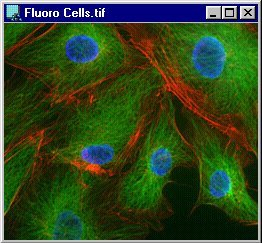
 |
| V++ Image Analysis Software The award-winning V++ software makes advanced imaging easy. Sophistication, speed, power and Windows compatibility all come together in one seamless package. The intuitive user interface adheres to all the accepted conventions for a Windows product so you probably already know how to use it ! If you are considering an upgrade from V for Windows 3.5 to V++ Version 4.0 then please also refer to the New V++ Features page for a breakdown of the differences. Use these bookmarks to find your way around this page: |
|
 |
|
| V++ Functions V++ incorporates many hundreds of image processing functions - all of those you would expect and many more besides. The broad areas of functionality include non-destructive brightness, contrast and gamma corrections, automatic shading corrections, geometric transformations, linear filters (up to NxN) and non-linear filters, Fourier processing (with true complex data), histograms, intensity profile plotting, image statistics, image arithmetic, logical operations, relational operations, extended mathematics (including image functions and complex math) morphological processing (with arbitrary structuring elements), automatic counting and full object shape analysis, and much more [ Specifications ] [ Top of page ] Advanced
Data Types
|
|
 Fracture of the humerus. Courtesy of D. Edgley, Auckland, New Zealand. Colours Camera Control (PVCAM) The innovative CameraBar compresses all of the
functionality of your camera into an incredibly small on-screen footprint. This unique
feature puts every camera feature within easy reach. In addition to advanced CCD cameras, V++ also supports
TWAIN devices (including digital cameras and flat-bed scanners) and video frame grabbers. Video Acquisition
With suitable hardware, V++ can capture video at realtime frame rates and export it to the standard AVI video clip format. [ Top of page ] Connectivity Automation with VPascal The V++ Advantage [ Top of page ] |
| © 1993-2003 Total Turnkey Solutions. All rights reserved. Specifications subject to change without notice. |